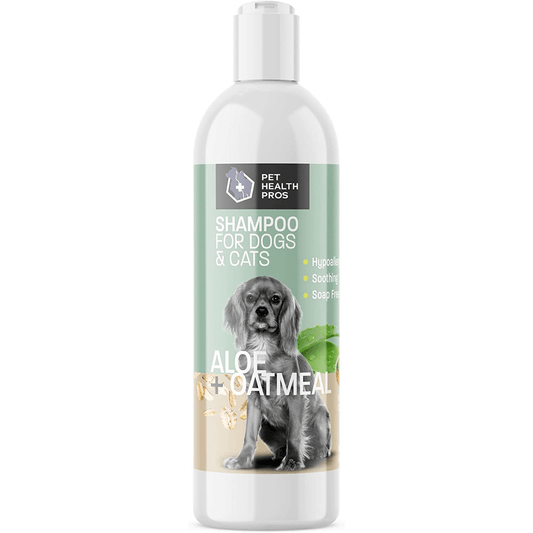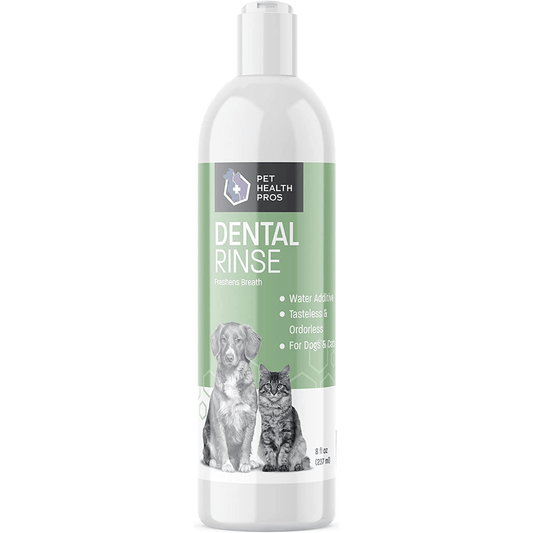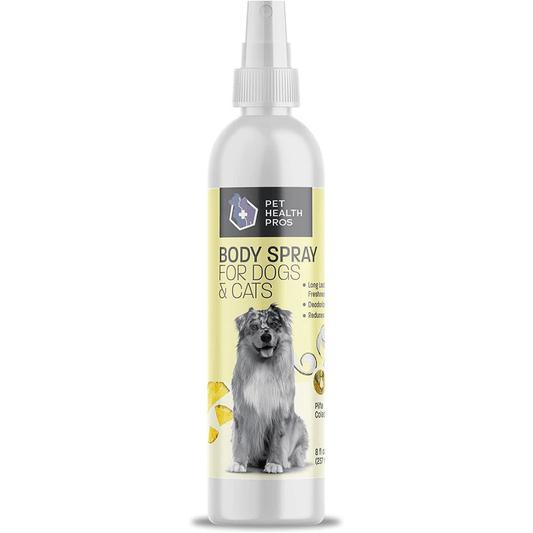Giardia in dogs is a common infection that can cause a range of health issues. Understanding how to recognize its symptoms, the life cycle of the parasite, and methods for treatment and prevention can help keep your furry friend healthy. This article dives into the signs of infection, how to diagnose and treat Giardia, and practical steps you can take to prevent its spread.
Key Takeaways
- Giardia in dogs often presents with symptoms like diarrhea, vomiting, and weight loss.
- Consult your veterinarian if your dog shows signs of gastrointestinal distress or unusual behavior.
- Preventing Giardia involves maintaining good hygiene and managing your dog's environment.
- Early detection is key to preventing long-term health issues related to Giardia.
- Not all dogs show symptoms, but they can still spread the infection to others.
Recognizing Giardia In Dogs
Common Symptoms to Watch For
Okay, so you think your dog might have Giardia? The first step is knowing what to look for. The most common sign is diarrhea, which can range from mild to severe. It might come and go, and sometimes it has a really foul smell.
Here's a quick rundown of other symptoms:
- Excessive gas
- Dehydration
- Weight loss
- Vomiting (less common, but it happens)
Behavioral Changes Indicating Infection
It's not just about the tummy troubles. Giardia can actually change your dog's behavior. You might notice they're more tired than usual, or they've lost their appetite. Some dogs will start eating grass like crazy, trying to soothe their upset stomach. Keep an eye out for these changes, especially if they're combined with the physical symptoms.
When to Consult a Veterinarian
Alright, so when do you actually need to call the vet? If your dog has diarrhea for more than a day or two, or if you see blood in their stool, it's time to get professional help. Also, if they're showing other signs like vomiting, lethargy, or refusing to eat, don't wait. Giardia can lead to dehydration and other problems if it's not treated, especially in puppies and older dogs.
It's always better to be safe than sorry. A quick trip to the vet can get your dog diagnosed and on the road to recovery. Plus, they can rule out other possible causes of the symptoms.
Understanding Giardia Life Cycle
How Giardia Infects Dogs
So, how does Giardia actually get into your dog's system? Well, it all starts with the ingestion of Giardia cysts. These cysts are like tiny protective shells that allow the parasite to survive outside of a host. Dogs usually pick them up by drinking contaminated water, eating contaminated food, or even just grooming themselves after coming into contact with infected feces. Once ingested, the cysts make their way to the small intestine, where they hatch and release the active form of the parasite, called trophozoites.
Stages of Giardia Development
- Cyst Stage: This is the dormant, infective stage. Cysts are hardy and can survive in the environment for weeks or even months, especially in water and moist conditions.
- Trophozoite Stage: This is the active, feeding stage. Trophozoites attach to the intestinal wall and multiply, causing damage and interfering with nutrient absorption.
- Encystation: As trophozoites move down the intestinal tract, they transform back into cysts, ready to be shed in the feces and infect new hosts.
The life cycle is pretty simple, but it's also what makes Giardia so persistent. The cysts are tough, and the trophozoites multiply quickly, leading to a high risk of infection and reinfection.
Transmission Methods
Giardia spreads in a few key ways. The most common is through the fecal-oral route. This means a dog ingests Giardia cysts that have been shed in the feces of an infected animal. Here are some common scenarios:
- Contaminated Water: Puddles, streams, and even water bowls can become contaminated with Giardia cysts.
- Contaminated Food: Eating grass or other items that have been contaminated by infected feces.
- Direct Contact: Dogs can pick up cysts by sniffing or licking contaminated surfaces or objects, or through direct contact with an infected dog's feces.
- Self-Grooming: Dogs can ingest cysts while grooming themselves, especially if they have been in contact with contaminated environments.
Diagnosing Giardia In Dogs
So, you suspect your furry friend might have Giardia. What's next? Getting a proper diagnosis is key to starting treatment. Here's the lowdown on how vets figure out if your dog has this pesky parasite.
Diagnostic Tests Available
Okay, so your vet has a few tricks up their sleeve when it comes to spotting Giardia. The most common tests include:
- Fecal Smear: This is the quick and dirty method. The vet looks at a small sample of your dog's poop under a microscope. It's fast, but not always the most reliable because Giardia can be sneaky and not show up every time.
- Fecal Floatation: This test is a bit more sensitive than a direct smear. The poop sample is mixed with a special solution that makes Giardia cysts float to the top, making them easier to spot under the microscope.
- ELISA (Enzyme-Linked Immunosorbent Assay): This is often considered the gold standard. It's a highly sensitive test that detects Giardia antigens (proteins) in the stool. It's more accurate than the other two, especially when Giardia is present in low numbers.
- Direct Fluorescent Antibody (DFA) Test: Another highly sensitive test that uses fluorescent dyes to highlight Giardia cysts and trophozoites under a microscope. It's great for confirming Giardia, but it's not as widely available as ELISA.
Interpreting Test Results
So, the vet runs the tests, and now you're waiting for the results. Here's what the different outcomes might mean:
- Positive Result: This means Giardia was detected. Time to start treatment!
- Negative Result: This doesn't always mean your dog is in the clear. Giardia can be shed intermittently, so a single negative test doesn't rule it out completely. Your vet might recommend repeat testing over a few days to be sure.
- False Positive: Rarely, tests can give a false positive result. This is more common with less sensitive tests like fecal smears. If your dog isn't showing any symptoms, your vet might want to confirm the result with a more accurate test like ELISA.
Differential Diagnosis
Giardia isn't the only thing that can cause diarrhea and other tummy troubles in dogs. Your vet will also want to rule out other possible causes, such as:
- Other intestinal parasites (like worms)
- Bacterial infections
- Viral infections
- Dietary indiscretion (aka, eating something they shouldn't have)
- Inflammatory bowel disease (IBD)
- Food allergies or sensitivities
It's important to give your vet as much information as possible about your dog's symptoms, diet, and environment to help them make an accurate diagnosis. Don't be afraid to ask questions and voice any concerns you have. Getting to the bottom of your dog's illness is a team effort!
Treatment Options for Giardia In Dogs
So, your dog has Giardia. It's not the end of the world, but you definitely want to get it sorted. Here's the lowdown on how vets usually tackle this parasite.
Medications and Their Effectiveness
The most common medications prescribed by vets are metronidazole and fenbendazole. Metronidazole is an antibiotic and antiprotozoal, while fenbendazole is a broad-spectrum dewormer. Your vet will decide which is best based on your dog's overall health and the severity of the infection. It's super important to follow the vet's instructions to a T, because not doing so can lead to the infection sticking around or even drug resistance. These medications are generally effective, but sometimes a second round or a different drug might be needed if the first one doesn't fully clear things up. Always consult with your vet about the best treatment options.
Home Care During Treatment
While the meds do their thing, there's stuff you can do at home to help your dog feel better and prevent the spread of Giardia:
- Keep your dog hydrated: Diarrhea can lead to dehydration, so make sure your dog always has access to fresh, clean water. You might even consider adding unflavored Pedialyte to their water to help replenish electrolytes.
- Bland diet: Stick to easily digestible foods like boiled chicken and rice. This gives their digestive system a break and can help reduce diarrhea. Avoid fatty foods or anything that could upset their stomach further.
- Hygiene is key: Bathe your dog regularly, especially around their rear end, to remove any Giardia cysts that might be clinging to their fur. Wash your hands thoroughly after handling your dog or their poop.
During treatment, it's important to disinfect areas where your dog spends time. Use a solution of bleach and water (1 part bleach to 32 parts water) to clean surfaces, bowls, and toys. Dispose of feces immediately and disinfect the area. This helps prevent reinfection and protects other pets (and humans!) in the household.
Follow-Up Care and Monitoring
After the course of medication is done, your vet will likely want to do a follow-up fecal test to make sure the Giardia is gone. If the test comes back positive, another round of medication or a different treatment approach might be necessary. It's also a good idea to keep an eye on your dog for any recurring symptoms, like diarrhea or vomiting. If anything seems off, give your vet a call. Regular check-ups and fecal exams are a good way to catch any potential problems early and keep your dog healthy. Don't skip the follow-up care!
Preventing Giardia In Dogs
Hygiene Practices for Dog Owners
Before anything else, keep your hands and gear clean when you handle your pup or clean up messes. Keeping your hands and dog gear clean is your first line of defense. Simple steps go a long way:
- Wash your hands with soap and warm water after picking up stool or touching your dog’s bowls.
- Rinse food and water dishes every day, then scrub them with a mild disinfectant.
- Launder bedding, blankets, and toys weekly in hot water.
- Scoop feces from yard and litter areas at least once a day—and toss it in a sealed bag.
A bit of extra effort now can save you hours and vet bills later. Giardia cysts can stick around if you cut corners.
Vaccination and Preventative Measures
No vaccine will stop every case, but in some situations vets may suggest immunization. Here’s a quick look:
| Vaccine | When to Use | Notes |
|---|---|---|
| Giardia vaccine | High-risk kennels, shows | May cut down cyst shedding but won’t block all infections |
If your dog spends time with many other dogs, ask your veterinarian if a shot makes sense. Monitoring and prompt cleanup still matter most.
Environmental Control Strategies
You can’t let cysts pile up in your yard or home. Try these steps:
- Remove all pet waste quickly—once something’s down, cysts can stick to grass and floors.
- Rinse hard surfaces (kennel floors, patio) with a bleach solution (1 part bleach to 32 parts water).
- Avoid letting your dog drink from puddles, stagnant ponds, or streams.
- Rinse outdoor toys and water stations weekly.
- Rotate play areas if possible, so one spot can rest and dry out completely before reuse.
Impact of Giardia On Dog Health
Giardia, while often treatable, can have a significant impact on a dog's overall health, especially if left unaddressed. It's not just about the immediate symptoms; the infection can lead to longer-term issues if not properly managed. Let's take a look at some of the potential complications and long-term effects.
Potential Complications
Giardia infections can sometimes lead to more serious problems, especially in puppies or dogs with weakened immune systems. Dehydration is a major concern due to the persistent diarrhea and vomiting. This can quickly become life-threatening if not corrected with fluids and electrolytes. In some cases, malabsorption can occur, where the dog's body struggles to absorb nutrients from food. This can result in weight loss, poor coat quality, and a general decline in health. Additionally, giardia can exacerbate existing conditions, making them harder to manage.
Long-Term Effects of Infection
Even after successful treatment, some dogs may experience lingering effects from a giardia infection. Chronic diarrhea or intermittent digestive upset can persist, requiring ongoing dietary management. In severe cases, the intestinal lining can be damaged, leading to long-term digestive sensitivities. Some dogs may also develop a decreased ability to absorb certain nutrients, requiring lifelong supplementation. It's important to monitor your dog closely even after treatment to watch for any signs of recurring issues.
Importance of Early Detection
Early detection of giardia is really important to minimize its impact on your dog's health. The sooner you catch it, the less likely it is to cause serious complications or long-term problems. Regular vet check-ups, including fecal exams, can help identify giardia early on. If you notice any signs of giardia, like diarrhea or vomiting, don't wait—get your dog checked out right away. Early treatment can make a big difference in preventing lasting damage and keeping your dog healthy and happy.
Giardia can really mess with a dog's gut, and sometimes the effects stick around even after the parasite is gone. It's not always a quick fix, and some dogs need extra care to get their digestion back on track. Paying attention to your dog's poop and acting fast if something seems off can save them a lot of trouble in the long run.
Giardia In Dogs: Myths and Facts
Common Misconceptions
Okay, so there's a lot of stuff floating around about Giardia, and not all of it is true. One big one? That Giardia only affects puppies or dogs with weak immune systems. While they are more at risk, any dog can get it. Another myth is that if your dog drinks from a puddle, they're guaranteed to get Giardia. While puddles can be a source, it's not a certainty. Also, some people think Giardia is a worm. Nope! It's a protozoan parasite.
Scientific Facts About Giardia
Giardia is a single-celled parasite that messes with a dog's intestines. It prevents the dog from absorbing nutrients properly, leading to diarrhea and weight loss. The parasite exists in two forms: trophozoites (the active, feeding form) and cysts (the hardy, infectious form). Cysts can survive in the environment for weeks or even months, especially in water and damp conditions. Giardia infections are diagnosed through fecal tests, and treatment usually involves medication prescribed by a vet.
Understanding Risk Factors
So, what makes a dog more likely to get Giardia? Well, think about their lifestyle. Dogs that spend a lot of time around other dogs, like in kennels or dog parks, are at higher risk. Also, dogs that drink from communal water bowls or scavenge in areas where other animals have been are more prone to infection. Puppies are more susceptible because their immune systems aren't fully developed. Here's a quick rundown:
- Exposure to contaminated water sources
- Contact with infected feces
- Overcrowded living conditions
- Young age
When it comes to Giardia in dogs, there are many misunderstandings. Some people think it’s only a problem for dirty dogs, but that’s not true. Giardia can affect any dog, regardless of how clean they are. It’s important to know the facts to keep your furry friend safe. If you want to learn more about Giardia and how to protect your dog, visit our website for helpful tips and information!
Final Thoughts on Giardia in Dogs
In summary, Giardia is a common parasite that can affect dogs, leading to various health issues. Recognizing the symptoms early, like diarrhea and weight loss, is key to getting your dog the help they need. Treatment usually involves medication, and with proper care, most dogs recover quickly. Prevention is all about keeping your dog's environment clean and being cautious about their water sources. Regular vet check-ups can also help catch any issues early. By staying informed and proactive, you can help keep your furry friend healthy and happy.
Frequently Asked Questions
What is Giardia and how does it affect dogs?
Giardia is a tiny parasite that can infect dogs and cause digestive problems. It lives in the intestines and can lead to diarrhea, weight loss, and other health issues.
How can I tell if my dog has Giardia?
Look for signs like diarrhea, vomiting, bloating, and loss of appetite. If your dog seems sick or has these symptoms, it’s best to see a vet.
How is Giardia diagnosed in dogs?
Vets can diagnose Giardia by doing a stool test. They check for the parasite in your dog's poop to confirm the infection.
What treatments are available for Giardia in dogs?
Treatment usually involves medications that kill the parasite. Your vet may also suggest special diets and fluids to help your dog recover.
Can Giardia be prevented in dogs?
Yes! Keeping your dog's environment clean, ensuring they drink clean water, and practicing good hygiene can help prevent Giardia.
Is Giardia contagious to other pets or humans?
Yes, Giardia can spread between pets and sometimes to humans. It's important to practice good hygiene and keep infected pets away from others.








